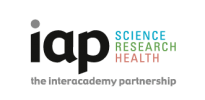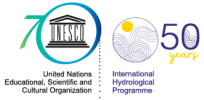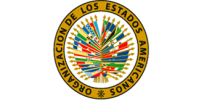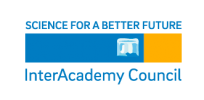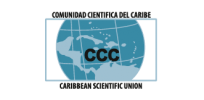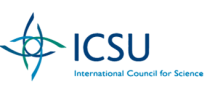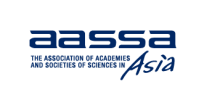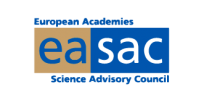PROGRAM STATEMENT
INTRODUCTION
Water is among the most critical resources provided by the Earth’s environmental endowment. Life as we know it cannot exist without water. The production of food and fiber requires water either through precipitation or irrigation or both. Water is also needed for many industrial processes. And, water is crucial in providing environmental services. Recently we have noticed it is key to aid in confronting health threats as pandemics. Water is not always available in the desired quantities and qualities at the time and place of use. This is a primary manifestation of water scarcity where scarcity means that the amount of water (or other goods and services) that people want exceeds the available supply. Water scarcity is expected to intensify throughout the Americas in the future. Among the causes of this are increasing population, continuing economic growth, deteriorating water quality, overexploitation of ground water and climate change. In some instances, scarcity will become severe unless it is attended to. This means that effective management of water will be essential to ensure the availability of those resources to support human health, nutrition, economic performance and the environment.
In most instances effective management will require policies and institutions which will permit societies to manage their water resources collectively. While there will be exceptions, the fact that water is mostly a fleeting or flowing resource that moves with time. This makes it difficult to vest private or individual property rights in the resource because the location of a given corpus body of the resource cannot be pinned down with any precision at any specific time. Without effective management and governance, ground water is often an open access resource which, if exploited in an individualistically competitive way will lead to extracting too much too soon and consequently lead to the premature economic exhaustion of the resource. Even in areas where water is relatively plentiful it can be degraded over time to the point where supplies of adequate quality are unavailable or relatively unavailable for some uses. These complications, the fact that water is always subject to some scarcity and the fleeting nature of the resource, means that governance institutions and the creation of adequate policies may be difficult to design and implement. The first requirement for effectiveness is that management regimes be based on available scientific knowledge. This does not mean that science is the only guide in devising effective governance. Issues of fairness or equity are important as well and are not resolvable scientifically and thus must be dealt with via political processes. Most policies, then, are formed through a mixture of different types of knowledge. While it may be necessary to modify and alter scientific prescriptions some aspects should be incorporated and should not be totally ignored.
The Water Program of the Inter-American Network of Academies of Sciences (IANAS) was created to promote water science accessible to society in different forms. In 2019 a Strategy Plan was developed by focal points representing their country academies of which all are water experts in different fields. The plan was elaborated as a guide aimed to orientate a strategy for the upcoming future in confronting the most prominent and actual water problems to contribute to science orientated to better water management in the Americas. The following components bring some elements of this Strategy Plan.
MISSION STATEMENT
The mission of the IANAS Water Program is to foster cooperation between Academies of Sciences in the Americas; to build scientific capacity in higher education, governmental and private sectors; to generate and disseminate the best credible scientific information on water for society in order to promote public understanding of science and its role; and to provide an independent source of scientific advice and knowledge for effective policy making on water management for sustainable development and an informed public.
PROGRAM GOALS
- To build scientific capacity through a program of training sessions and publication of informational material on water and its management.
- To disseminate and provide useful information to individual academics and stakeholders.
- To provide independent scientific advice on water management for policymakers, water managers and the public.
- To share science-based management practices with stake holders.
- To provide independent scientific knowledge on potential threats to the sustainability of water resources and potential management practices to ensure sustainability.
- To encourage collaboration and international partnerships to address major water problems and challenges.
- To promote public understanding of water issues and the role of science in the making of effective water policy.
PROGRAM STRENGTHS
Unique Strengths
- The IANAS Water Program is unique in its representation of water resources expertise and collective knowledge of the water resources of the Americas.
- Members experience with and knowledge of the water resources of the Americas extends not just to the gathering and characterizing of information about those resource but to the analyses of problems and formulation of solutions.
- The ability to characterize problems on a hemispheric basis is unique to the program.
- The Focal Points also have a collective ability to relate water with other resources and human problems. The pervasiveness of water in the landscape means that it is part of many other issues such as climate change, energy, biodiversity, food security and issues of governance.
- The Focal Points have substantial experience in networking and interacting with water scholars in virtually all countries of the Americas. Significant evidence of this is found in the three published volumes where Focal Points have organized teams of authors from academe and water management agencies to prepare individual chapters.
- The Focal Points bring different disciplinary backgrounds, ranging from social sciences to biology, chemistry, medicine, public health and engineering, to their common tasks. This enables them to approach hemispheric water problems in a multidisciplinary and interdisciplinary fashion.
- The Focal Points’ relationships with their respective academies of science signifies the high quality of their scientific abilities and training.
- The Focal Points are committed to the Water Program and the great majority of them have served for long periods of time. There are a significant number who have served since the inception of the Water Program in 2004.
- Focal Points are well-known scientists with strong influence as opinion leaders in local, regional and national scientific communities.
- Some Focal Points have experience with cooperating with policy makers or water companies and water authorities.
- The cohesiveness of the organization and the friendships among members are a truly unique characteristic of the Water Program. Focal Points respect each other both personally and professionally. These traits have allowed them to forge especially successful working partnerships. Indeed, if the current group of Focal Points were to be lost in some common accident it is highly unlikely that a new group with similarly cohesive and respectful relationships could be established.
Common Strengths
- The Focal Points are productive as individuals.
- The Focal Points are productive as a group as evidenced by three major publications and participation in international water conferences and cooperation with counterpart regional organizations of academies of science on other continents.
- The capacity of the organization to muster scientific evidence and make it available to policy makers and members of the public is demonstrable.
- The Water Program has the capacity to identify and assess alternative solutions to promote science-based policies and best management practices.
- The Focal Points also have the ability to characterize and analyze the societal aspects of water problems. Indeed, chapters that focus on water and women and water and society are found in the published volumes and are tangible evidence of this strength.
- The Water Program has had very good leadership from several generations of Co-Chairs since its inception.
PROGRAM PRIORITIES
Prepare a major volume entitled “Ground Water Management in the Americas.” The volume to be partially informed by the results of a workshop on Glaciers and Ground water.
- Develop new capacity-building training courses.
- Continue to work with the Network of African Science Academies on the development of a report on water scarcity.
- Participate in international conferences if and when realistic opportunities arise.
- Make science available to a professional, policymaker and manager public on special topics of actual interest for water issues in brief 2 page articles.

